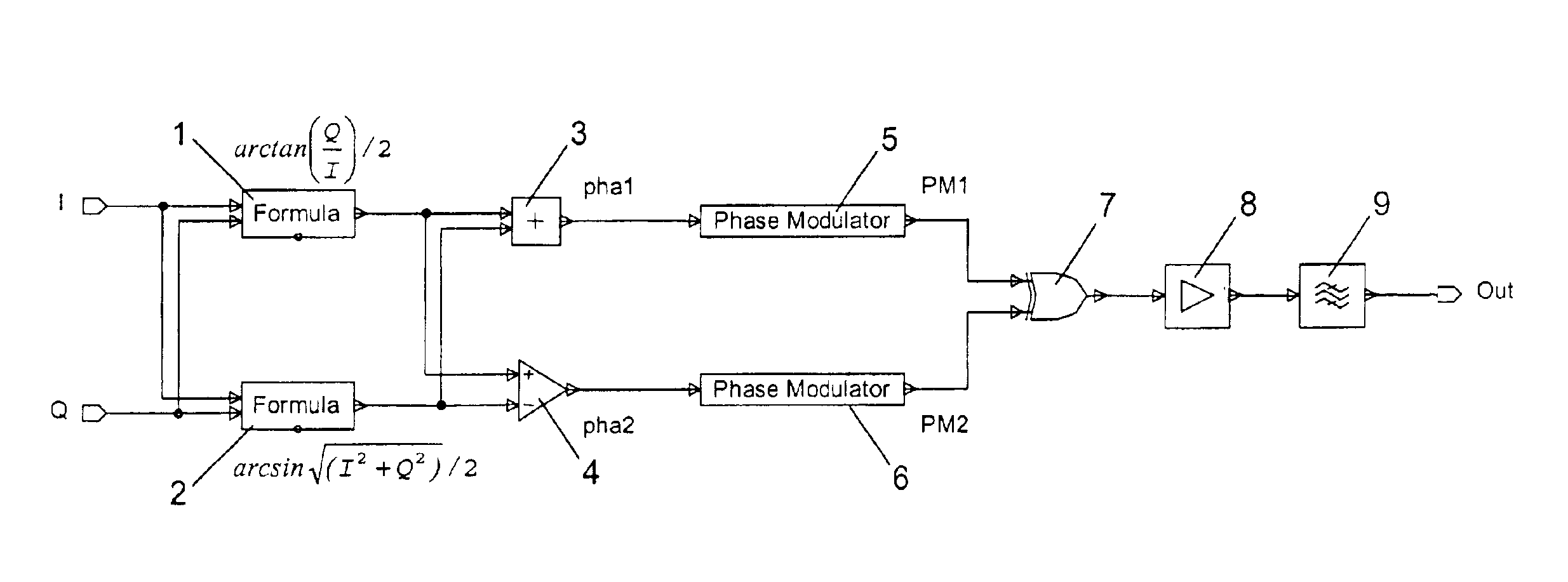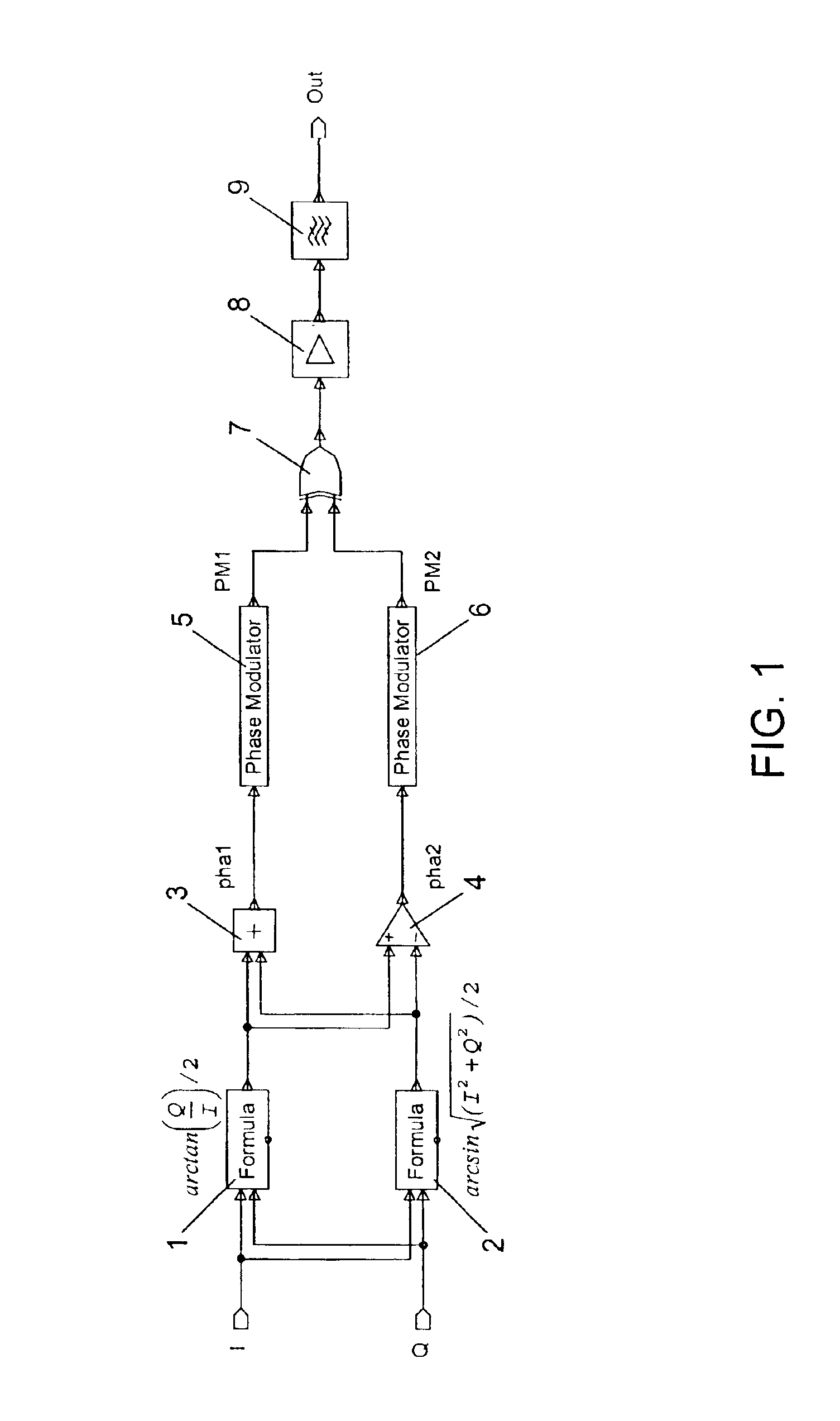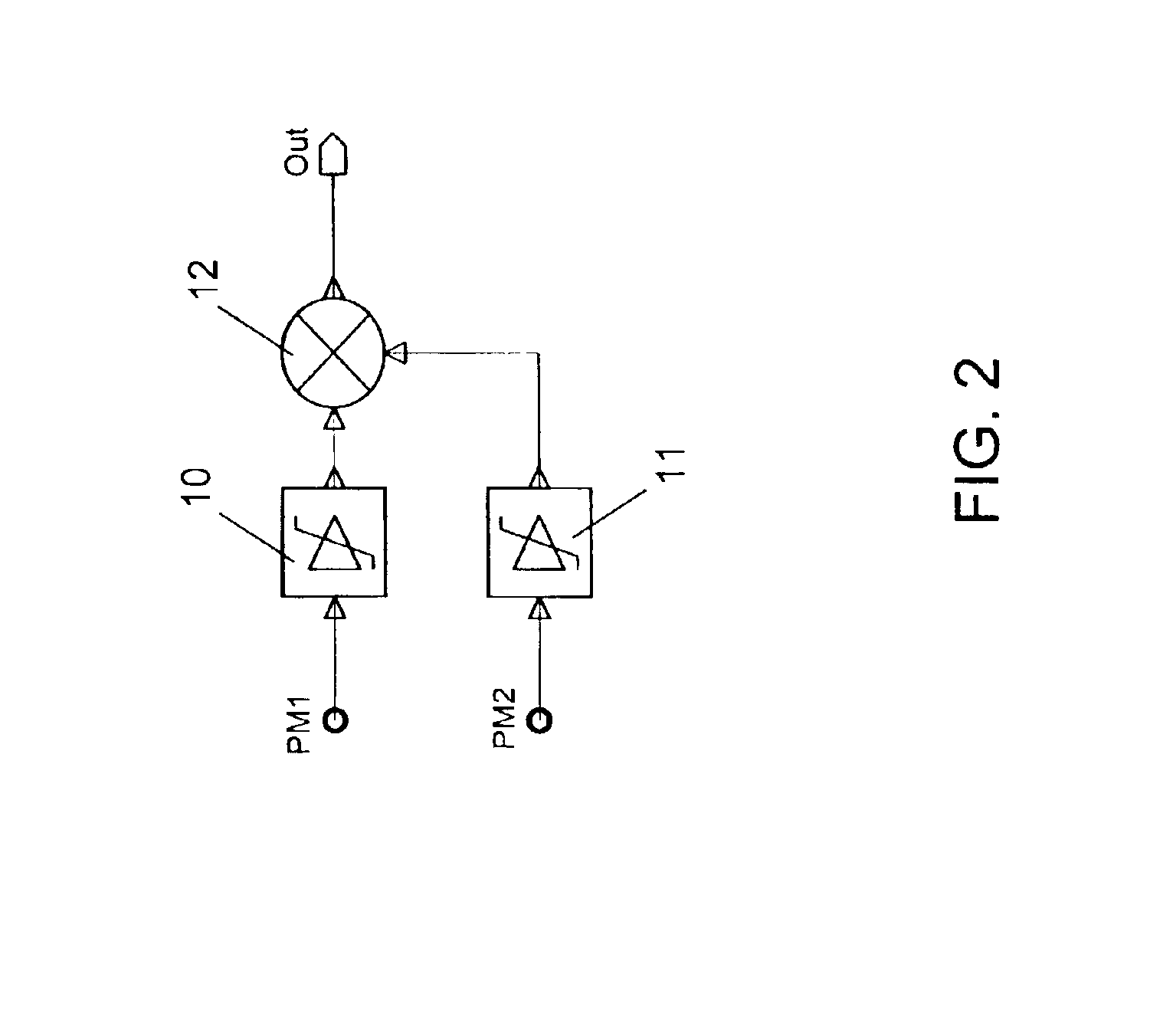Method and system for a generation of a two-level signal
a modulation signal and two-level technology, applied in the field of modulation system and to a modulated signal generation method, can solve the problems of limited efficiency, non-linearity of extremely amplitude, heat and/or operation time problems in the transmitter equipment, etc., and achieve high linearity, high power efficiency, and high efficiency
- Summary
- Abstract
- Description
- Claims
- Application Information
AI Technical Summary
Benefits of technology
Problems solved by technology
Method used
Image
Examples
Embodiment Construction
[0022]FIG. 1 presents an exemplary embodiment of a modulation system according to the invention, which can be employed in a transmitter for achieving a variable envelope modulation of a radio frequency signal based on amplitude varying control signals.
[0023]In the modulation system of FIG. 1, a first input ‘I’ is connected on the one hand to a first processing component 1 and on the other hand to a second processing component 2. A second input ‘I’ is equally connected on the one hand to the first processing component 1 and on the other hand to the second processing component 2. The output of the first processing component 1 is connected to a first input of a summing unit 3 and to a non-inverting input of a subtraction unit 4. The output of the second processing component 2 is connected to a second input of the summing unit 3 and to an inverting input of the subtraction unit 4. The first and the second processing component 1, 2, the summing unit 3 and the subtraction unit 4 constitut...
PUM
 Login to View More
Login to View More Abstract
Description
Claims
Application Information
 Login to View More
Login to View More - R&D
- Intellectual Property
- Life Sciences
- Materials
- Tech Scout
- Unparalleled Data Quality
- Higher Quality Content
- 60% Fewer Hallucinations
Browse by: Latest US Patents, China's latest patents, Technical Efficacy Thesaurus, Application Domain, Technology Topic, Popular Technical Reports.
© 2025 PatSnap. All rights reserved.Legal|Privacy policy|Modern Slavery Act Transparency Statement|Sitemap|About US| Contact US: help@patsnap.com



